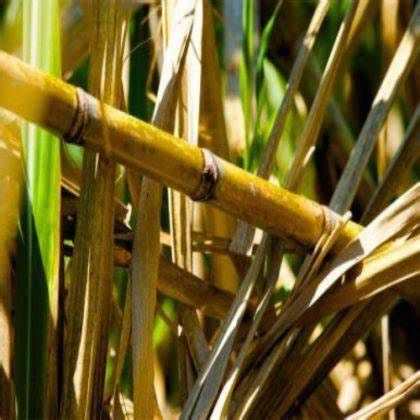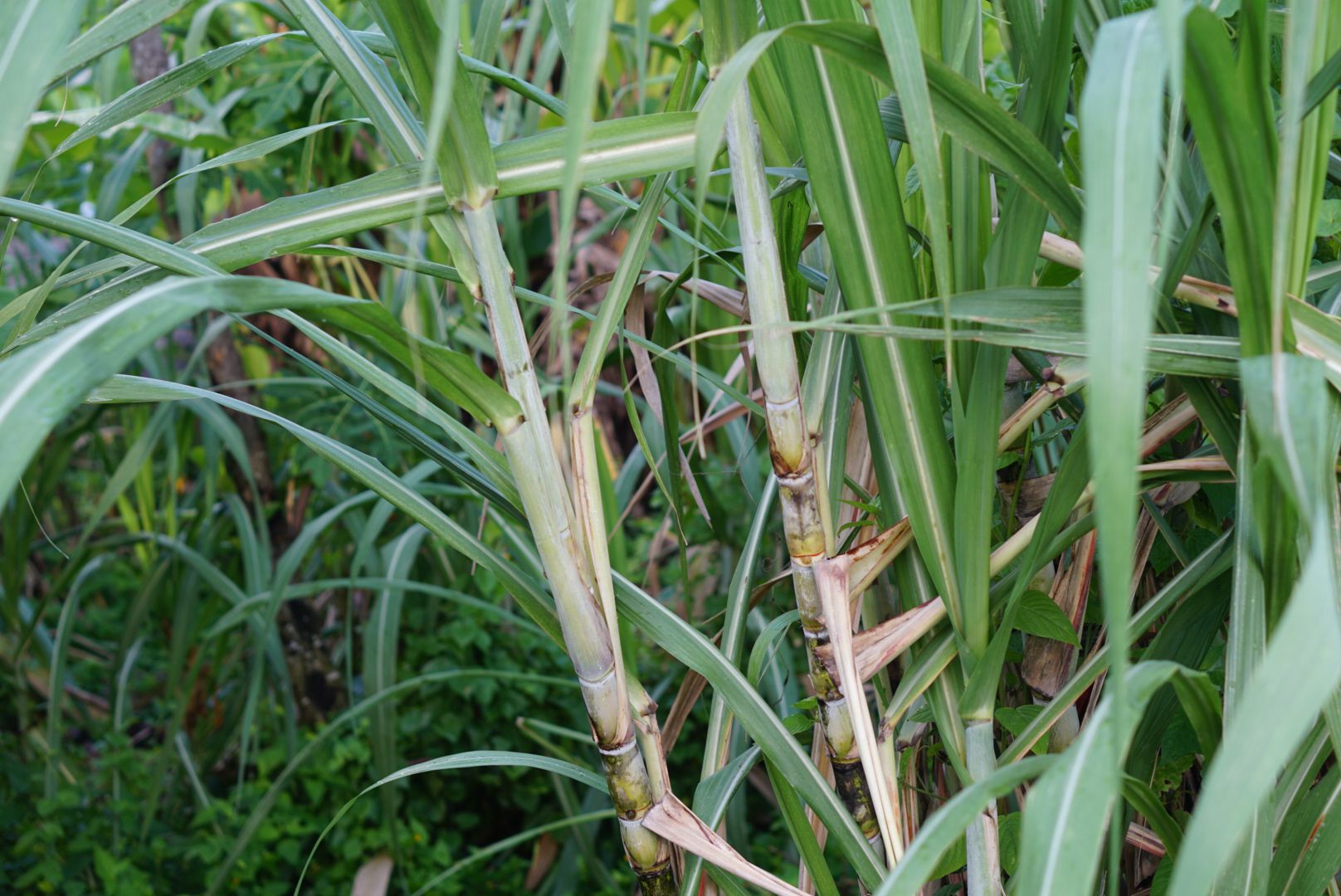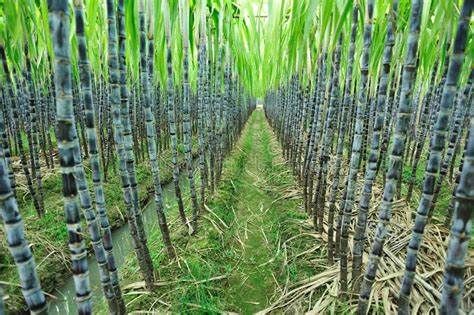Cotton farming has been a cornerstone of agriculture for centuries, providing raw materials for one ...
Sugarcane farming is one of the most important cash crops in India. It serves as a primary raw material for sugar, jaggery, and various industrial products. Cultivating sugarcane can be highly rewarding, but it requires careful planning, proper timing, and modern farming techniques to achieve the best results. With the right timing and techniques, farmers can significantly increase their yield and profit. Let’s explore the best practices for sugarcane cultivation in detail.
गन्ने की खेती भारतीय किसानों के लिए सबसे महत्वपूर्ण नकदी फसलों में से एक है। यह न केवल चीनी और गुड़ उत्पादन के लिए उपयोगी है, बल्कि अन्य औद्योगिक उपयोगों के लिए भी जरूरी है। गन्ने की खेती सही समय और विधि से की जाए, तो उपज और मुनाफा दोनों बढ़ाया जा सकता है। आइए, गन्ने की बुवाई के समय और प्रक्रिया के बारे में विस्तार से जानते हैं...
गन्ने की बुवाई के लिए सही समय का चयन बहुत महत्वपूर्ण है। गन्ने की बुवाई मुख्य रूप से दो समयों पर की जाती है:
बसंतकालीन बुवाई (फरवरी-मार्च): यह गन्ने की मुख्य बुवाई का समय है। इस समय तापमान लगभग 20-25 डिग्री सेल्सियस रहता है, जो बीज अंकुरण और जड़ विकास के लिए उपयुक्त होता है।
प्री-खरीफ बुवाई (जून-जुलाई):मानसून के आगमन के साथ गन्ने की बुवाई की जाती है। इस समय मिट्टी में नमी पर्याप्त होती है, जिससे गन्ने का अच्छा विकास होता है।
बुवाई (अक्टूबर-नवंबर): कुछ स्थानों पर गन्ने की शरदकालीन बुवाई भी की जाती है। यह क्षेत्रीय जलवायु और फसल चक्र पर निर्भर करता है।

गन्ने की खेती के लिए दोमट या बलुई दोमट मिट्टी सबसे उपयुक्त होती है। बुवाई से पहले खेत को 2-3 बार जोतकर मिट्टी को मुलायम और समतल बनाना जरूरी है। जैविक खाद जैसे गोबर की खाद मिलाकर मिट्टी की उर्वरता बढ़ाई जाती है। गन्ने की किस्म का चयन फसल की उत्पादकता में अहम भूमिका निभाता है। CO 0238, CO 86032 जैसी उन्नत किस्में अधिक उपज और चीनी की मात्रा के लिए जानी जाती हैं।
बीज के रूप में गन्ने के स्वस्थ और रोग-मुक्त टुकड़ों का उपयोग करना चाहिए। बीजों को फफूंदनाशक और कीटनाशक जैसे कार्बेंडाजिम और क्लोरपाइरीफॉस से उपचारित करना जरूरी है। इससे रोगों और कीटों से बचाव होता है, और बीज का अंकुरण बेहतर होता है।

गन्ने की बुवाई तीन तरीकों से की जाती है। नाली विधि में खेत में 90-120 सेंटीमीटर की दूरी पर नालियां बनाई जाती हैं, जिनमें बीज बोए जाते हैं। यह विधि सबसे ज्यादा प्रचलित है। मेड़ और नाली विधि पानी की कमी वाले क्षेत्रों के लिए उपयुक्त है, जहां बीज को ऊंची मेड़ों पर बोया जाता है।
बीज को 3-5 सेंटीमीटर गहराई में बोना चाहिए, ताकि वह आसानी से जड़ पकड़ सके। बुवाई के तुरंत बाद हल्की सिंचाई करना जरूरी है। यह बीज के अंकुरण में मदद करता है और मिट्टी की नमी बनाए रखता है।
यह भी पढ़ें: गेहूं की खेती | सरसों की खेती
गन्ने की फसल को पर्याप्त पानी की आवश्यकता होती है। बुवाई के बाद पहली सिंचाई 4-5 दिनों के भीतर करनी चाहिए। इसके बाद हर 7-10 दिनों पर सिंचाई की जरूरत होती है, विशेष रूप से गर्मी के मौसम में। सर्दियों में सिंचाई का अंतराल 15-20 दिन किया जा सकता है।
खाद प्रबंधन में नाइट्रोजन, फॉस्फोरस और पोटाश का संतुलित उपयोग जरूरी है। बुवाई के समय इन उर्वरकों का उपयोग करने से फसल का विकास तेज होता है। जैविक खाद और माइक्रोन्यूट्रिएंट्स का समय-समय पर छिड़काव करना भी लाभकारी होता है।
गन्ने की फसल में लाल सड़न और तना छेदक जैसे रोग और कीट अक्सर समस्या पैदा करते हैं। लाल सड़न से बचने के लिए फफूंदनाशक का उपयोग करें, जबकि तना छेदक की रोकथाम के लिए क्लोरपाइरीफॉस जैसे कीटनाशकों का छिड़काव करें। खेत में जलभराव और खरपतवार को नियंत्रित रखना भी रोगों से बचाव में मदद करता है।

गन्ने की फसल 10-12 महीनों में परिपक्व हो जाती है। कटाई के समय गन्ने को जड़ के पास से काटना चाहिए। कटाई के तुरंत बाद फसल को चीनी मिल तक पहुंचाना जरूरी है, ताकि उसकी गुणवत्ता बनी रहे।
गन्ने की खेती में सही समय और आधुनिक तकनीक का पालन करना सफलता की कुंजी है। मिट्टी की तैयारी, उच्च गुणवत्ता वाले बीज, सही सिंचाई और खाद प्रबंधन से फसल की उपज को बढ़ाया जा सकता है। रोग और कीट नियंत्रण पर ध्यान देकर फसल की गुणवत्ता भी सुनिश्चित की जा सकती है। गन्ने की खेती किसानों के लिए लाभ का एक बड़ा स्रोत है, और सही विधियों का उपयोग इसे और अधिक फायदेमंद बना सकता है।
यह भी देखे -
Youtube video 📷- गन्ने की खेती
The timing of sugarcane sowing plays a crucial role in determining the success of the crop. There are three main seasons for sugarcane sowing:
Spring Sowing (February-March): This is the most preferred season for sugarcane cultivation. The temperature during this period ranges between 20°C to 25°C, which is ideal for germination and growth.
Pre-Kharif Sowing (June-July): With the onset of the monsoon, the soil retains adequate moisture, making it suitable for sowing. This season is especially beneficial in regions with limited irrigation facilities.
Autumn Sowing (October-November): In certain areas, sugarcane is also sown during autumn. The cooler climate during this period supports better germination and early growth.
Sugarcane grows best in loamy or sandy loam soil with good drainage. The soil's pH should range between 6.5 and 8 for optimal growth. Before sowing, the field should be plowed 2-3 times to make the soil loose and aerated. Adding organic manure, such as farmyard manure or compost, enhances soil fertility.
Choosing high-yielding and disease-resistant varieties of sugarcane is critical for successful farming. Popular varieties like CO 0238, CO 86032, and BO 91 are known for their productivity and high sugar content. Use healthy and disease-free sugarcane sets (seed pieces) for planting. Treat the seeds with fungicides like carbendazim and insecticides like chlorpyrifos to protect them from pests and diseases.
The sowing method greatly impacts the yield and quality of sugarcane. Farmers generally use one of the following methods:
Furrow Method: This is the most commonly used method, where furrows are made 90-120 cm apart, and the seed pieces are placed within them.
Ridge and Furrow Method: Suitable for areas with water scarcity, the seeds are sown on raised ridges to improve drainage and conserve moisture.
Trench Method: This method is used for higher productivity, where trenches are dug, and seeds are placed at an appropriate depth.
The seeds should be sown at a depth of 3-5 cm for better root establishment. After sowing, light irrigation is essential to ensure proper seed germination.
Sugarcane requires consistent water supply throughout its growth. The first irrigation should be done immediately after sowing. Subsequent irrigations should be provided every 7-10 days in summer and every 15-20 days in winter, depending on soil moisture levels.
Balanced fertilization is essential for optimum growth. Nitrogen, phosphorus, and potassium are the primary nutrients required. Organic fertilizers and micronutrients should also be applied periodically to enhance soil health and crop yield.
Weed management is crucial in the first 2-3 months of sugarcane growth to prevent competition for nutrients and water. Manual weeding or the application of selective herbicides can help maintain a weed-free field.
Sugarcane is prone to pests and diseases such as red rot and stem borers. Regular monitoring and the use of appropriate pesticides, such as chlorpyrifos, can protect the crop. Good field hygiene and proper drainage also reduce the risk of infections.
Sugarcane is usually ready for harvest after 10-12 months of sowing. It is essential to harvest the crop at the base to retain its juice content. Once harvested, the sugarcane should be transported to sugar mills immediately to preserve its quality and sugar content.
Sugarcane farming can be highly profitable if carried out with proper planning and scientific techniques. From soil preparation to timely irrigation and pest management, every step plays a vital role in ensuring a healthy crop and maximum yield. By following modern farming practices, farmers can boost their income and contribute to the growing demand for sugarcane in the market.
0
0
Cotton farming has been a cornerstone of agriculture for centuries, providing raw materials for one ...
Bajra, also known as pearl millet, is a highly resilient and nutritious crop widely cultivated in ar ...
Wheat is one of the most widely cultivated and consumed grains globally. It serves as a staple food ...
Spinach , commonly known as Palak in India, is a nutritious leafy green vegetable rich in vitamins a ...
Maithi, commonly known as fenugreek (Trigonella foenum-graecum), is a versatile herb used both as a ...
Radish is one of the most popular root vegetables grown across the world. It is valued for its crunc ...
Cabbage is a versatile and widely consumed vegetable known for its rich nutritional value and numero ...
Carrot is a root vegetable that is widely grown around the world due to its high nutritional value a ...
Mung dal, also known as green gram, is a highly nutritious legume that is widely cultivated across A ...
Mustard farming is widely practiced across most states in India, mainly grown as a Rabi crop. Mustar ...
In today’s article, we will discuss precision farming, a new agricultural practice that uses techn ...
Rabi crops are an integral part of Indian agriculture, usually sown during the winter season. These ...
Barley farming is an important Rabi crop that is not only beneficial for health but also economicall ...
Berseem (Trifolium alexandrinum) is a valuable fodder crop widely used in animal husbandry due to it ...
The use of machines in mustard farming has become a game-changer for farmers, improving efficiency, ...
Maize, also known as corn, is a vital cereal crop grown extensively in India. It serves as a staple ...
Sweet potato, known for its rich nutrition and quick-growing nature, is a crop that can offer good p ...